![]()
Winter 2014 | ITIC
This study is originally published by The Meir Amit Intelligence and Terrorism Information Center. The study is an overall analysis of ISIS, also known as ISIL, Islamic State (or IS). The study is structured in nine sections,[1] which if read in conjunction with each other, draws a complete picture of ISIS. You can also download the study in PDF format here.
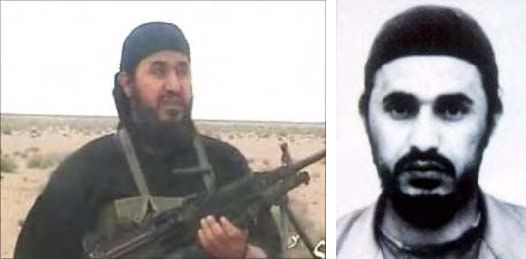
Abu Musab al-Zarqawi, founder of Al-Qaeda in Iraq (Left, from Al-Jazeera, July 8, 2006; right, Inbaa.com)
Historical background
ISIS took root in the new era created in Iraq after the Americans took control of the country in 2003. The Second Gulf War led to the overthrow of Saddam Hussein’s regime, the dismantling of the Iraqi army and the destruction of the existing governmental structure. As a result, a security and governmental vacuum was created and the country’s fragile social fabric (in the middle of which was the volatile Sunni-Shi’ite schism) was severely damaged.
During the almost nine years (2003 — 2011) the United States army was stationed in Iraq the Americans failed to establish effective Iraqi army and security forces to fill the newly-created security vacuum. While in Iraq, the Americans encouraged the establishment of what was supposed to be a democratic national Shi’ite regime headed by Nouri al-Maliki. However, the regime alienated the Sunni population, which had traditionally controlled the country, even though they were a minority (about 22% of the Iraqi population is Sunni Arabs — alongside the Kurds, who are also Sunnis — while about 60% of Iraqis are Shi’ites).
The branch of Al-Qaeda in Iraq, established in 2004, entered the security vacuum and took advantage of the increasing political-societal Sunni alienation: It became an important actor in the insurgent organizations fighting the American army, became stronger after the withdrawal of the American troops at the end of 2001, and spread to Syria after the civil war began in March 2011. The establishment of Al-Qaeda and ISIS in Iraq and Syria occurred in four stages:
- Stage One (2004-2006) — The establishment of the branch of Al-Qaeda in Iraq led by Abu Musab al-Zarqawi and called “Al-Qaeda in Mesopotamia:” It waged a terrorist-guerilla war against the American and coalition forces and against the Shi’ite population. The first stage ended when Abu Musab al-Zarqawi was killed in an American targeted attack in June 2006.
- Stage Two (2006-2011) — Establishment of the Islamic State in Iraq (ISI): ISI served as an umbrella network for several jihadi organizations that continued waging a terrorist-guerilla campaign against the United States, its coalition allies and the Shi’ite population. ISI was weakened towards the end of the American presence in Iraq following successful American military moves and a wise foreign policy that supported the Sunni population and knew how to win their hearts and minds.
- Stage Three (2012-June 2014) — The strengthening of ISI and the founding of ISIS: After the American army withdrew from Iraq ISI became stronger. Following the outbreak of the Syrian civil war ISI established a branch in Syria called the Al-Nusra Front (“support front”). Dissension broke out between ISI and its Syrian branch, leading to a rift between ISI and Al-Qaeda and the establishment of the Islamic State in Iraq and Greater Syria (ISIS).
- Stage Four (as of June 2014) — Dramatic ISIS military achievements: The most prominent was the takeover of Mosul, the second largest city in Iraq. At the same time ISIS established its control in eastern Syria where it set up a governmental center (its “capital city”) in Al-Raqqah. In the wake of its success, ISIS declared the establishment of an “Islamic State” (IS) (or “Islamic Caliphate”) headed by an ISIS leader named Abu Bakr al-Baghdadi. In September 2014 the United States declared a comprehensive campaign against ISIS, which is currently waging a fierce struggle against its many enemies both at home and abroad.
In ITIC assessment, historically speaking there are similarities between the results of the American invasion of Iraq, the Soviet invasion of Afghanistan and the Israeli invasion of Lebanon. In all three instances the invading country failed to establish a new political order or to stabilize an effective, supportive regime. In effect all three invasions had a deleterious effect on the existing delicate politicalsocial fabric: in Afghanistan and Iraq they caused changes that contributed to the establishment of radical Sunni jihadi terrorist organizations and in Lebanon to a radical Shi’ite terrorist organization following Iranian ideology and receiving Iranian support. The terrorist organizations established in Iraq (the branch of Al-Qaeda), Afghanistan (Al-Qaeda) and Lebanon (Hezbollah) exist to this day. ISIS, which developed from a branch of Al-Qaeda, has become strong in Iraq and Syria and today threatens the order and stability of the Middle East and the entire world.
Establishment of Al-Qaeda’s branch in Iraq led by Abu Musab al-Zarqawi and the beginning of the campaign against the United States and its allies
The establishment of Al-Qaeda and the global jihad in Iraq began when Abu Musab al-Zarqawi, a Jordanian global jihad operative, went to Iraq in 2002 (before the entrance of the Americans). Al-Zarqawi (a nickname for Ahmad Fadil al-Nazal al-Khalayleh) was influenced by the Jordanian Salafist-jihadi movement headed by Abdullah Azzam, Abu Muhammad al-Maqdisi and Abu Qatada (all three of whom are of Palestinian origin). While in Afghanistan in 1989 Abu Musab al-Zarqawi underwent ideological indoctrination and operational training conducted by Abdullah Azzam (Osama bin Laden’s ideological mentor). Al-Zarqawi returned to Jordan in 1993 where he was detained and imprisoned in 1994 and released in 1999, at which point he went back to Afghanistan.
After September 11, 2001, al-Zarqawi fled from Afghanistan and sought refuge in Iran. In 2002, before the American entrance into Iraq, he went to the Kurdish region of northern Iraq. While there he collaborated with a Kurdish jihadi Islamist organization called Ansar al-Islam, established in September 2001 (which is still operative and belongs to the coalition in Iraq collaborating with ISIS). Al-Zarqawi later established his own Islamic jihadi organization, Al-Tawhid wal-Jihad (“the oneness [of Allah] and jihad”). After the Americans invaded Iraq in March 2003 he joined the insurgents fighting the United States and became a prominent figure until he was killed in a targeted American attack.
In October 2004 al-Zarqawi’s organization joined Al-Qaeda. He swore allegiance to Osama bin Laden and was declared the leader (emir) of Al-Qaeda in Iraq). (In Arabic al-qaeda fi bilad al-rafidayn, Al-Qaeda in the country of the two rivers, i.e., Mesopotamia). It was the first branch Al-Qaeda established beyond the borders of Afghanistan and Pakistan. With its founding, al-Zarqawi was no longer the leader of a local Islamic jihadi organization but rather had become the official representative of Al-Qaeda in Iraq, and later one of the prominent terrorists among the global jihad networks. The jihad network al-Zarqawi established in Iraq, initially composed of operatives who had been affiliated with it in Pakistan and Afghanistan, later enlisted operatives from Iraq, Syria and other Arab countries.
As the emir of Al-Qaeda in Iraq al-Zarqawi formulated a strategy for the campaign against the United States. He had the following objectives: harm U.S. forces and its allies; discourage Iraqi collaboration by targeting government infrastructure and personnel; target reconstruction efforts in Iraq with attacks on Iraqi civilian contractors and aid workers; and draw the U.S. military into a sectarian Sunni-Shiite war by targeting Shiites.[6] The wave of terrorism he initiated against the Shi’ite population, the result of his strong anti-Shi’ite doctrine, was carried out by suicide bombers and the use of car bombs which caused many civilian casualties, sowed chaos throughout Iraq, made it difficult to stabilize the internal situation and added a murderous gene to the ISIS DNA.
Abu Musab al-Zarqawi’s strategy, which stressed broad attacks on the Shi’ite population (and sometimes on Sunni civilians as well), was criticized by both Osama bin Laden and his deputy Ayman al-Zawahiri. They were concerned that the indiscriminate killing of innocent Muslim civilians would erode public support for Al-Qaeda throughout the entire region. In July 2005 they criticized his strategy and instructed him to stop attacking Shi’ite religious and cultural sites. He refused, and his relations with the Al-Qaeda leadership deteriorated.[7] The dispute held the seeds of the tensions and rivalry between the branch of Al-Qaeda in Iraq and the central Al-Qaeda leadership, as it was manifested through ISIS’s independent actions and policy, and ISIS and the Al-Qaeda leadership headed by Ayman al-Zawahiri.
The terrorist-guerilla campaign of the branch of Al-Qaeda in Iraq was mainly carried out in and around Baghdad and in western Iraq. The local Sunni population in those regions became hostile to the central Iraqi government and to the United States, and today forms ISIS’s societal and political power base. The most important city in the Sunni region was Fallujah. Fallujah is located in Al-Anbar, the largest province in the country, which became al-Zarqawi’s power base and symbolized the jihadi campaign against the American army. Al-Zarqawi’s main campaign was concentrated in Iraq, but he had made attempts to export jihadi terrorism to other Arab states, including Jordan, his country of origin (See below).
Ideologically, Abu Musab al-Zarqawi handed down to his heirs a radical Islamic, uncompromising legacy whose traces are evident in ISIS’s actions to this day. Noteworthy is its hostility toward Shi’ites in general and Iraqi Shi’ites in particular, whom he referred to in strong terms (“human scum,” “poisonous snakes,” “deadly poison”). He regarded the Shi’ites as a fifth column who, along with pro-American Sunnis, were trying to institute a new Shi’ite regime in Iraq, anti-Sunni and pro-American. That anti-Shi’ite legacy, based on Arabic Islamic sources from the Middle Ages, gave al-Zarqawi what he considered “Islamic legitimacy” to carry out mass-killing attacks on Shi’ites and the Shi’ite-affiliated central government. His objective was to instigate a Shi’ite-Sunni civil war that would destabilize public order, prevent the establishment of a Shi’ite regime and support Al-Qaeda’s takeover of Iraq. ISIS has continued its brutality towards the Shi’ite population in Iraq and Syria, implementing the legacy of al-Zarqawi who, after his death, became a revered figure and role model.[8]
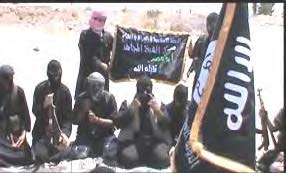
Abu Musab al-Zarqawi turned into a role model: operatives in the Abu Musab al-Zarqawi camp. The banner reads, “ISIS – the camp named for the conqueror, the jihad fighter Abu Musab al-Zarqawi – may Allah receive him (as a shaheed in paradise)”
The establishment of the Islamic State in Iraq (ISI) and expanding the campaign against the United States and its allies
On June 7, 2006, Abu Musab al-Zarqawi was killed in an aerial targeted attack carried out by the American army on a house in the city of Baqubah, northeast of Baghdad. His position as head of the branch of Al-Qaeda in Iraq was inherited by Abu Hamza al-Muhajir, aka Abu Ayyub al-Masri.
Abu Hamza al-Muhajir, to this day considered by ISIS as one of its founding fathers, was an Al-Qaeda operative of Egyptian origin, born in 1968, and was close to Abu Musab al-Zarqawi. In 1982 he joined the Egyptian jihadi organization headed by Ayman al-Zawahiri and was sentenced to death by Egypt in 1994 (apparently in absentia). Between 2001 and 2002 he underwent training in Afghanistan where he met Abu Musab al-Zarqawi. He specialized in preparing IEDs used in Afghanistan and Iraq which caused the United States army many losses.
During the years Abu Hamza al-Muhajir headed the branch of Al-Qaeda in Iraq (2006-2010), he maintained contact with Al-Qaeda operatives outside Iraq to receive support and to carry out terrorist attacks. He was involved in moving Al-Qaeda operatives from Syria to Iraq and in sending suicide bombing terrorists and car bombs to Al-Qaeda networks beyond Iraq’s borders. His name is on the list of terrorists wanted in Iraq issued by the United States Central Command (Centcom) in February 2005 and a price of $50,000 was put on his head.
On October 15, 2006, about four months after the death of al-Zarqawi, an umbrella network called the Islamic State in Iraq (ISI) was established for Sunni jihadi organizations, dominated by the branch of Al-Qaeda in Iraq established by al-Zarqawi. The network was headed by Abu Omar al-Baghdadi, an Iraqi jihadist operative, whose real name was Hamid Daoud Muhammad Khalil al-Zawi. In 1987, during the Saddam Hussein era, he was expelled from Iraq and joined jihad operatives in Afghanistan who were fighting the Russians. Between 2004 and 2005 he participated in the battles for Fallujah and received a head wound. He later had a senior role in the Al-Qaeda in Iraq leadership, retaining it until he was appointed to head the new umbrella network.

Abu Hamza al-Muhajir (left), who inherited the leadership of the branch of Al-Qaeda in Iraq from al-Zarqawi, and Abu Omar al-Baghdadi (right), who was appointed leader of ISI. The pictures were made public by the Iraqi government after the two were killed in a targeted attack in April 2010.
The new umbrella network was composed of Sunni jihadi organizations which had fought the American army in Iraq. It was apparently established because of the blow Al-Qaeda suffered with the death of al-Zarqawi. To reestablish its power, the branch of Al-Qaeda in Iraq joined forces with other organizations with a similar ideology. However, Al-Qaeda in Iraq was the dominant factor in the umbrella network and has continued in that role to this day in ISIS. Among the jihad organizations that joined the network were Majlis Shura al-Mujahideen, Jaish al-Fatihin, Jund al-Sahaba and Katibat Ansar al-Tawhid wal-Sunnah.
The ISI took root mainly in western Iraq, which had a tribal Sunni society (especially in Al-Anbar province, which extends to the Syrian border). The guerilla and terrorist activities the organization carried out after the death of al-Zarqawi peaked in 2006-2007 with many attacks against the United States and the Shi’ite-affiliated Iraqi government. At the same time it began establishing a civilian administration within the Sunni population in the area under its control, as an alternative to the central government.
Between 2008 and 2011 ISI’s power waned. That was mainly because of the American army’s extensive military campaign which began at the beginning of 2007, called the “surge.” The American forces were assisted by Sunni tribesmen in the campaign against the jihadi group, especially in Al-Anbar province, where the tribes despised the brutal practices of Al-Qaeda and the jihadi organizations. The tribesmen, who at the time received large financial incentives from the Americans, organized into groups called “awakening councils” or “awakening groups.”
However, as the date of the American withdrawal from Iraq approached, the amount of aid the councils received decreased and the security situation began to deteriorate. On the other hand, the Shi’ite al-Maliki regime, which became more sectarian, was enforced on the Sunnis. As a result the status of the awakening councils was eroded and the tribal heads, who had ruled under the aegis of the Iraqi administration, lost their status as well. That prepared the ground for the Sunni tribes to join the ranks of ISIS in the campaign against the Iraqi regime when it began some years later.
One of the more conspicuous successes of the American campaign against the jihadi networks in Iraq was the elimination of two prominent ISI figures in April 2010. The Iraqi security forces, in collaboration with the American forces, killed both Abu Omar al-Baghdadi and Abu Hamza al-Muhajir. The leadership of ISI was inherited from Abu Omar al-Baghdadi by a prominent Iraqi jihadist named Abu Bakr al-Baghdadi, who heads ISIS today.
While the military campaign in Iraq was being waged, Abu Musab al-Zarqawi and after him ISI, constructed a covert operational infrastructure in Syria. Its objective was to provide logistic support for the armed jihad campaign in Iraq against the United States and the coalition; the Syrian regime turned a blind eye and did not take effective steps against it. According to the British Quilliam Foundation, Abu Musab al-Zarqawi began constructing the jihadi infrastructure in Syria as early as 2000 by sending a number of jihadists veterans of his operations in Afghanistan, to Syria and Lebanon. They established “guesthouses” in Syria from which they recruited operatives to fight in Iraq.[9]
Thus during the campaign against the United States and the coalition in Iraq, Syria served as a way station for thousands of foreign Arab-Muslim jihadists en route to the fighting in Iraq. The direction has been reversed and during the Syrian civil war thousands of jihadists from ISIS have gone from Iraq to Syria and joined the ranks of the rebels against the Assad regime.
Rebuilding the force of the ISI and the increase in its activities after the withdrawal of the American army
The withdrawal of the American forces from Iraq in December 2011 left a military security vacuum, enabling ISI to rebuild and gather strength to renew its terrorist campaign against the Shi’ite population and the central Iraqi government. That was done to encourage a civil war between Sunnis and Shi’ites. In addition, the civil war that broke out in Syria in March 2011 weakened the Assad regime and provided ISI with an opportunity to dispatch operatives to Syria and export its jihadi influence and ideology, until it managed, within a few years, to take over between a quarter and a third of Syria’s territory in the east and north.
In the three years since the withdrawal of the American forces from Iraq (2012-2014), ISI has waged an increasingly powerful terrorist-guerilla campaign against the Shi’ite population and the central Iraqi government. According to UN statistics, the total number of civilian casualties (including police) in 2013 was the highest since 2008, with 7,818 killed (6,787 in 2008) and 17,981 (20,178 in 2008) injured.[10]
The highlight of the ISIS attack on Iraqi regime institutions in 2013 was breaking into the Abu Ghraib prison, near Baghdad. The prison, the largest and best guarded in Iraq, notorious even during the Saddam Hussein regime, housed the rebels who fought the American army when it was in Iraq. After the American withdrawal it was used by the Iraqi government to imprison hundreds of Al-Qaeda operatives.
Abu Ghraib was broken into on July 21, 2013, according to a plan devised by ISIS leader Abu Bakr al-Baghdadi. It began with artillery fire to soften resistance, after which the walls were breached by two car bombs. Fifty ISIS operatives entered the prison armed with machine guns and grenades, opened the cells and released about 500 Al-Qaeda operatives. The operation, which lasted about an hour, met with no significant resistance from the Iraqi prison guards, most of whom fled when ISIS began firing artillery. The operatives who were released were taken from the prison by waiting ISIS vehicles and driven to nearby Syria (Lisireport.worldpress.com, Alsharqiya.com, YouTube, Time.com). The released operatives had extensive terrorist experience and provided significant reinforcements for ISIS (Note: Some of them were detained by the American army before it withdrew from Iraq). That apparently contributed greatly to ISIS’s later successes.
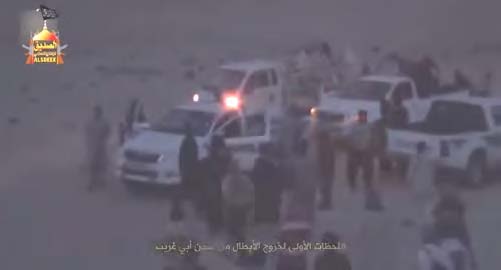
Scene from a video showing the ISIS vehicles waiting for the prisoners who were broken out of Abu Ghraib (YouTube)
The year before the Abu Ghraib jailbreak ISIS leader Abu Bakr al-Baghdadi issued a audio cassette for his supporters reporting his plans to release prisoners. He called the campaign “Breaking Walls.” During a 12-month period ISIS conducted 24 complex attacks using car bombs. Its operatives broke into eight Iraqi prisons in addition to Abu Ghraib, and released dozens of Al-Qaeda operatives (Time.com, December 16, 2013).
Dispatching suicide bombers: the operational trademark (in its various forms) of the Al-Qaeda branch in Iraq
The use of suicide bombers in Iraq has been the trademark of Al-Qaeda’s branch in Iraq and currently of ISIS. At the end of the American invasion of Iraq Osama bin Laden and his second-in-command called on Iraqi civilians to carry out suicide bombing attacks to hurt the American invaders: “Use bombs wisely, not in forests and on hills…The enemy is scared primarily by fighting in the streets in cities…We emphasize the importance of suicide operations against the enemy”[11].
Bin Laden’s call did not fall on deaf ears. During the first two years of the American presence in Iraq, there were 18 suicide bombing attacks carried out by an estimated 270 suicide bombers. Some of the attacks were carried out by operatives belonging to Abu Musab al-Zarqawi’s organization, which had joined Al-Qaeda.[12] Others were carried out by operatives belonging to ISI, established after al-Zarqawi was killed. They targeted the forces of America and the coalition, the new central Iraqi administration established by the United States and Iraqi Shi’ites. In some instances the suicide bombers detonated the car bombs in military bases and government facilities (sometimes by men wearing Iraqi army uniforms as camouflage).
There were 98 suicide bombing attacks in Iraq in 2013 as opposed to 50 in Syria.[13] ISIS did not claim responsibility for several of those that caused many Shi’ite civilian casualties.[14] The mass-killing attacks undermined the al-Maliki regime (according to Time Magazine, in September-December 2013 more than 3,000 people were killed in Iraq by suicide bombing attacks). Nevertheless, Iran and the Shi’ite militias fighting the American army until its withdrawal preferred to send 7,000-8,000 Shi’ite operatives to Syria to defend the Assad regime, rather than to cope with ISI in Iraq, underestimating its potential threat.[15]
During 2014 ISIS-instigated suicide bombing attacks in Iraq continued. Prominent among them was a series of deadly attacks carried out throughout October 2014 in residential areas in Baghdad, mainly among the Shi’ite population. The attacks, which killed hundreds of people, can perhaps be considered as increased ISIS pressure on Baghdad in addition to the attacks on Al-Anbar province, possibly in preparation for a campaign against Baghdad (See below).
The expansion of ISI into Syrian territory, the establishment of ISIS and its growing strength
At the end of 2011 ISI sent Syrian and Iraqi jihadists skilled in guerilla warfare to Syria to participate in the campaign against the Assad regime. In January 2012 they covertly established the Al-Nusra Front (“support front”), a jihadi organization headed by Abu Muhammad al-Julani, thereby establishing an additional power base for ISI outside Iraq.[16] Al-Julani was appointed “emir” of Syria, i.e., the commander of the organization’s Syrian branch, and was initially subordinate to ISI leader Abu Bakr al-Baghdadi.
The gradual formation of the Al-Nusra Front as an independent jihadi organization was accompanied by a deepening rift with ISI, its parent organization. In an attempt to halt the process, Abu Bakr al-Baghdadi declared the unification of the two organizations under his leadership, changing the name of ISI to a new name that would express the unification, “The Islamic State in Iraq and Greater Syria [al-Sham],” or ISIS[17] (April 9, 2013). However, Abu Muhammad al-Julani refused to subordinate himself to al-Baghdadi and quickly swore allegiance to Al-Qaeda leader Ayman al-Zawahiri. In the developing rivalry between the two, Al-Zawahiri took sides and on June 10, 2014, announced the unification had been annulled. On January 3, 2014, al-Zawahiri announced he had severed all connections with ISIS and that ISIS was no longer a branch of Al-Qaeda.
In response, in February 2014 ISIS issued a public statement attacking the Al-Qaeda leadership and the Al-Nusra Front. Abu Muhammad al-Adnani, a senior ISIS figure and its spokesman, accused the Al-Qaeda leadership of “straying from the correct path.” He said Al-Qaeda was no longer the foundation for jihad and that ISIS was the only jihadi organization operating according to the vision of Osama bin Laden and Abu Musab al-Zarqawi (YouTube, April 17, 2014). Thus the split between the Al-Qaeda leadership and ISIS became open. As a result, disputes between ISIS and the Al-Nusra Front and other rebel organizations in Syria worsened, leading to violent clashes between them. Since then the Al-Nusra Front has been operating in Syria independently, while ISIS also operates both in Syria and in Iraq, its home countries and power base (giving it an advantage over the Al-Nusra Front).
Since the public split between ISIS and the Al-Qaeda leadership, the jihad organizations have become polarized, each adopting its own modus operandi: ISIS has a reputation for conducting its relations with the population and its rivals in a strictly brutal fashion based on al-Zarqawi’s legacy, using force to implement Islamic religious law here and now in every region over which it has control. The Al-Nusra Front’s policies towards the population and its rivals are more pragmatic, enabling it to gain the support of the local residents and to actively cooperate with the other rebel organizations operating in Syria.
Documents dealing with the confrontation between ISIS and the Al-Qaeda leadership

Announcement from Ayman al-Zawahiri about Al-Qaeda’s rejection of ISIS, issued on January 3, 2014 on Al-Qaeda-affiliated Islamic forums (Muslim.org).

ISIS announcement attacking Al-Qaeda and the Al-Nusra Front, February 4, 2014 (Alplatformmedia.com).
In retrospect, it can be said that since the split ISIS has become stronger in Iraq and Syria and overshadowed the Al-Nusra Front. In ITIC assessment that is because of the attraction of its ideology (which increased after the self-declaration of the Islamic Caliphate); its brutality (which frightens its enemies); its military achievements (resulting, among other factors, from its ability to move forces and weapons to and from eastern Syria and western Iraq); and its many resources (weapons and money stockpiled during 2014). ISIS’s strengthening over the past year is expressed in many ways: commanders and entire units of the Al-Nusra Front and other rebel organizations have joined it; parts of the Sunni opposition in Iraq collaborate with it; foreign fighters, including those from Western countries, tend to join the ISIS’s ranks rather than those of the Al-Nusra Front; oaths of allegiance have been taken to Abu Bakr al-Baghdadi by jihad organizations beyond the borders of Iraq and Syria (moat notable so far was the Egyptian Ansar Bayt al-Maqdis).
![]()
[1] Links to all other nine sections:
You can read the overview — “ISIS: Portrait of a Jihadi Terrorist Organization” — here.
You can read section 2 — “ISIS’s ideology and vision, and their implementation” — here.
You can read section 3 — “ISIS’s military achievements in Iraq in the summer of 2014 and the establishment of its governmental systems” — here.
You can read section 4 — “ISIS establishes itself in eastern and northern Syria” — here.
You can read section 5 — “ISIS’s capabilities: the number of its operatives, control system, military strength, leadership, allies and financial capabilities” — here.
You can read section 6 — “Exporting terrorism and subversion to the West and the Arab world” — here.
You can read section 7 — “ISIS’s propaganda machine” — here.
You can read section 8 — “The American campaign against ISIS” — here.
You can read section 9 — “ISIS response to the American campaign (update to mid-November 2014)” — here.
![]()
Notes:
[6]Zachary Laub and Jonathan Masters, Council on Foreign Relations: “Islamic State in Iraq and Greater Syria,” June 12, 2014, updated August 8, 2014; cfr.org.
[7]Laub and Masters.
[8]For example, the ISIS training base in the Syrian city of Al-Raqqah is named after him. In Iraq and Syria, youth groups are nicknamed “al-Zarqawi’s [lion] cubs.”
[9] Noman Benotman and Roisin Blake “Jabhat al-Nusra, a Strategic Briefing.” quilliamfoundation. Also see the ITIC September 17, 2013 bulletin, “The Al-Nusra Front (Jabhat al-Nusra) is an Al-Qaeda Salafist-jihadi network, prominent in the rebel organizations in Syria.”
[11] Bin Laden tape: full text, www.bbc.com, February 12, 2003, as cited in Yoram Schweitzer and Sari Goldstein Ferber, Al-Qaeda and the Internationalization of Suicide Terrorism, Memorandum 78, Jaffe Center for Strategic Studies, Tel Aviv University, November 2005, p. 78.
[12] Ibid.
[13] See the article by Yotam Rosner, Einav Yogev and Yoram Schweitzer, ” A Report on Suicide Bombings in 2013,” INSS Insight No. 507, January 14, 2014. (inss.org.il) According to the article, in 2013 there were 291 suicide bombing attacks carried out in 18 countries worldwide, causing the deaths of approximately 3,100 people. About 50% of the attacks (148 of the total) were carried out in the Middle East, most of them (98) in Iraq. The data thus indicate that the number of suicide bombing attacks carried out in Iraq during that period was greater than the number carried out in Syria, although international attention focused less on Iraq than on Syria.
[14] For example, on September 11, 2013, a suicide bomber blew himself up at the Shi’ite Tamimi Mosque in a Husseiniya (a Shi’ite social-religious institution). It was carried out in the Shi’ite neighborhood of Al-A’zamiya. Forty Shi’ites were killed and dozens wounded. Despite the fact that ISIS did not claim responsibility for the attack, in ITIC assessment the organization was responsible. On September 21, 2013, a suicide bomber blew himself up in a car bomb in the Shi’ite Baghdad neighborhood of Madinat al-Sadr, killing eight people. In that case as well, ISIS did not claim responsibility but apparently it was nevertheless responsible.
[15] For further information see the March 18, 2014 bulletin “Shi’ite Foreign Fighters in Syria.)
[16] For further information see the September 17, 2013 bulletin “The Al-Nusra Front (Jabhat al-Nusra) is an Al-Qaeda Salafist-jihadi network, prominent in the rebel organizations in Syria. It seeks to overthrow the Assad regime and establish an Islamic Caliphate in Greater Syria, a center for regional and international terrorism and subversion.”
[17] It is sometimes called the Islamic State in Iraq and the Levant (ISIL). “Greater Syria” seems to be the more correct translation of the term al-sham, which is why the ITIC prefers ISIS and not ISIL.



 RSS
RSS



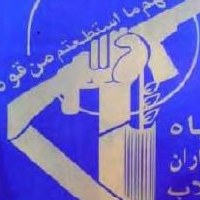


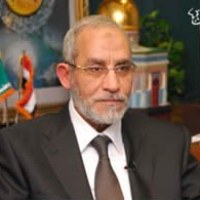
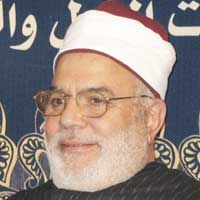







Latest Comments
Hello Mike, Thank you for your positive feedback to the article. I felt there wasn’t too much critical analysis of ...
Thanks for this considered and well constructed article. A follow up article on the manner in which the editorial contro...
THE CLUELESSNESS OF CLAIMING THAT OBAMA'S MIDDLE EAST POLICIES WERE A FAILURE CANNOT BE FURTHER FROM THE TRUTH, WHAT THE...
As long as Obama is the president of the usa do not trust the us government......
Thank you for an good read....